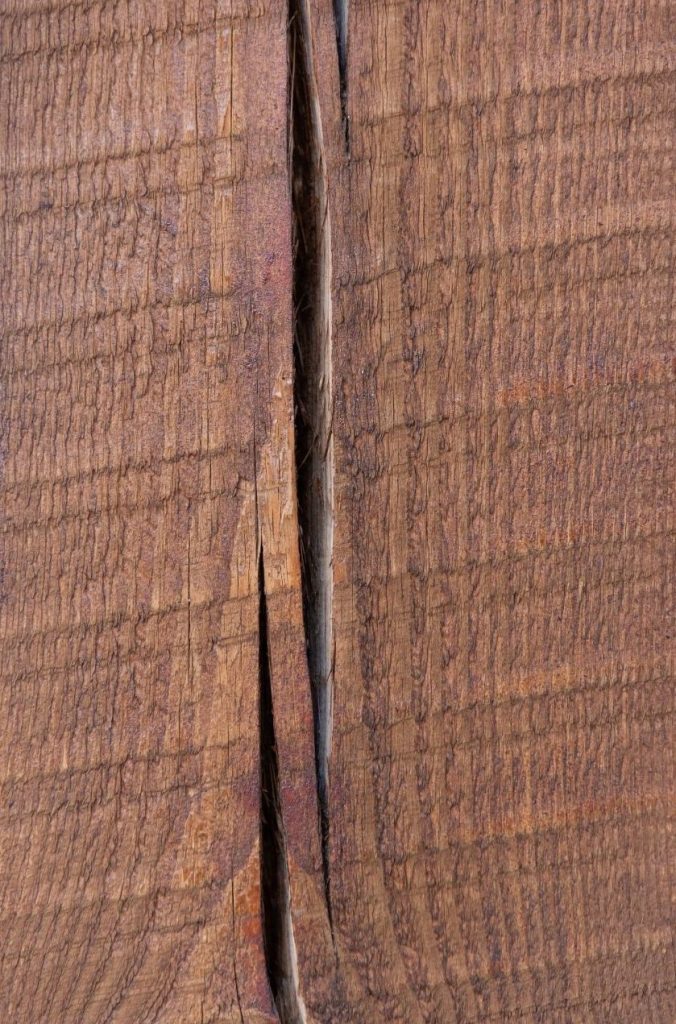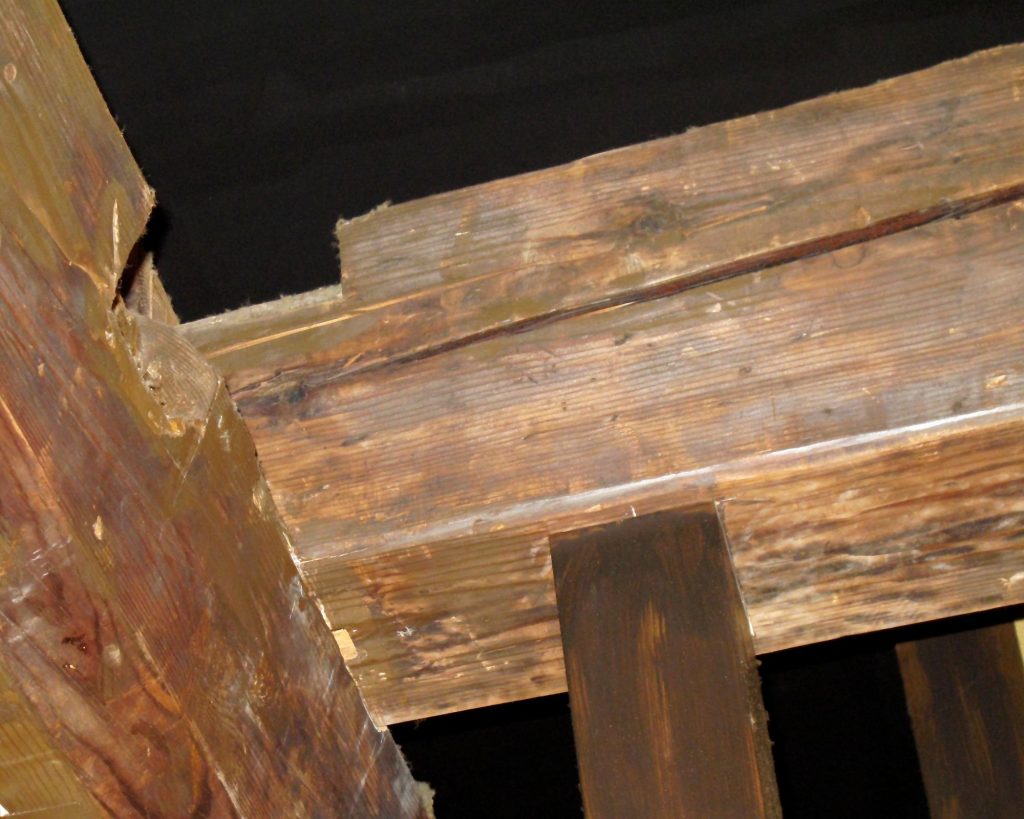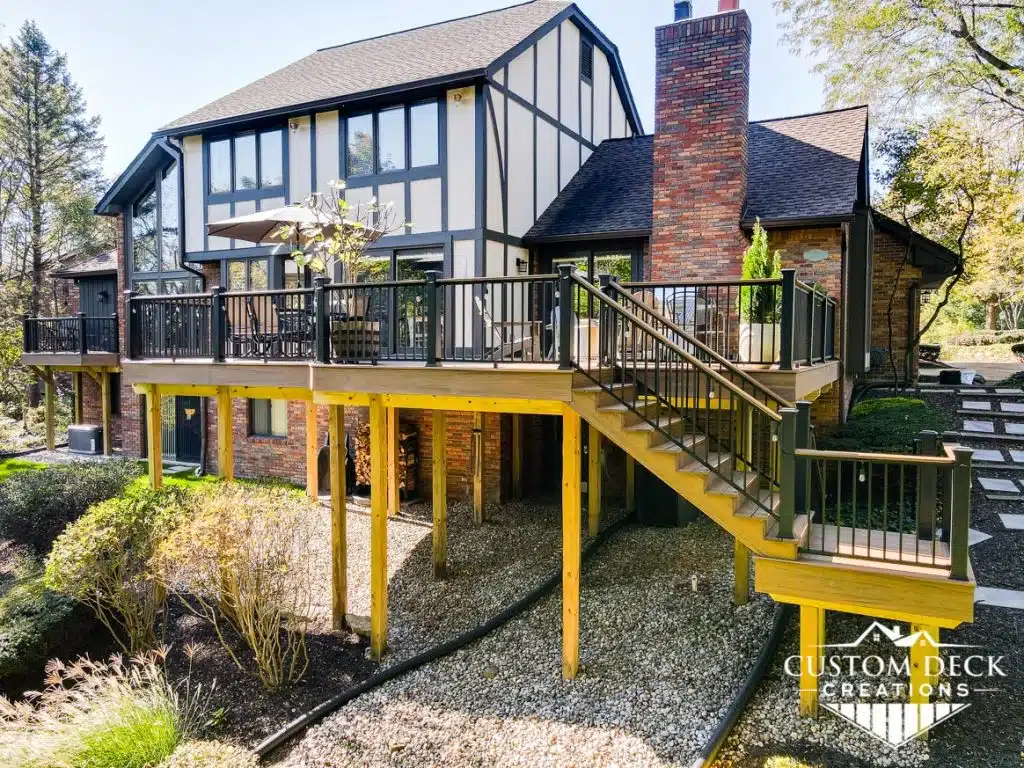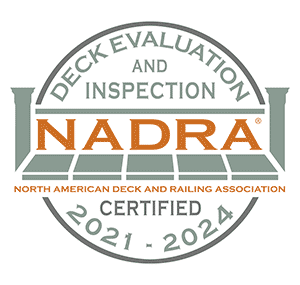Cracking (also referred to as checking) in lumber is somewhat inevitable.
Over time, you’ll likely begin to notice these cracks in the lumber that makes up your deck’s framing. They seem to happen without warning and can look rather concerning. Wanting to learn more is entirely understandable and the right move to make.
So are cracks in deck posts or beams a disaster waiting to happen? Or simply a natural occurrence?
These are the questions we’ll answer today. We’re going to give you the rundown on what causes lumber to crack, what signs you should watch out for, and how you can prevent it from happening in the future.
What Causes Pressure Treated Lumber to Crack?

First off, the type of cracking we’ll mainly discuss today runs parallel with the woods grain or the slope of the grain.
As new lumber dries out and begins to cure, it shrinks, which is what causes the visible splitting. From our experience, we know that moisture cycles (freeze-thaw and dry-wet) will typically result in these visible cracks as well.
Even though some of these splits in the lumber may look like damage, they aren’t usually a concern for structural stability. However, you should still assess the situation to ensure nothing more serious is going on.
Note: If you’re noticing cross-grain cracks, this could be a sign of Brown Rot Fungi, which can quickly result in the lumber losing a lot of its strength.
Evaluation
Even though cracks are somewhat common in lumber, there are specific characteristics you’ll want to watch out for on your deck.
The Size
Usually, superficial cracks caused by drying will radiate from the lumber’s outer surface and towards its center. But it’s much less common for it to pass beyond that.
Many experts agree that a specific width or length of a split can be a sure sign that something is wrong. For example, cracks in deck posts or beams that split completely through the wood signify something more serious, which means your structure may no longer be sound.
Location & Growth
While size matters, usually a more critical concern is the location of the crack and if it grows over time.
Joints & Notches
Any splitting at a joint or connection usually deserves a closer inspection.

Look a the beams of your deck. Are there any large cracks where the metal fasteners or connections are attached to the structure? Also, you should note if you see any forming around notches. For example, if your railing posts or beams are notched, look for splitting that starts at each inner corner.
Failures at these connections can lead to structural collapses even if the rest of the wood frame is intact. And while it’s important to note that these aren’t “hard and fast rules,” if you start to notice them make sure to get your deck inspected by a licensed deck professional.
Causes of Damage
Extreme loading, rot, and insect damage can all be culprits of wood splitting (and sometimes posts). But damage like this often shows up much differently than regular cracking. Including what we’ve already discussed:
- Cracking along joints and connections
- Lumber that has split all the way through
You should also watch out for:
- Actual breakage of the wood fibers
- Sagging along the beam
PRO TIP: Deck Inspections
You know to immediately reach out to a local builder specializing in decks if you notice something concerning. But we also recommend having your deck inspected every three years. Doing this ensures the structure remains safe and you catch any problems while they’re small and before an accident happens.
Prevention
While cracks in deck posts and beams are generally only a cosmetic concern, they can allow water to seep into the lumber and cause rot. It can also give insects an easy way to access the non-treated areas of the wood.
Still, it’s not something you should worry yourself about too much. Your deck structure isn’t consistently getting soaked with rain beneath the decking boards. And there are ways to protect vulnerable wood from termites and other insects.
The Bottom Line
Fortunately, most of the cracks in deck posts or beams you’ll see won’t be a structural concern. But considering every deck and circumstance is different, use this post as a guide and not a rulebook.
If you see something you don’t like, always have a licensed deck builder take a look to rule out any damage.
What Next?
Are you looking to rebuild your deck or need a licensed deck inspector? Let’s chat!
At Custom Deck Creations, we design and build composite decks for clients across SE Michigan. We’ll happily come by to inspect your current deck and give you an honest assessment of its condition. And work with you to redesign the perfect deck for your space if you decide it’s time for an upgrade.
Please get in touch with us to schedule an inspection! Or take a look at our most recent builds if you’re looking for some inspiration.
Did you enjoy this post? Share it with a friend who might find it helpful. Want to keep reading? Check out these posts next:










